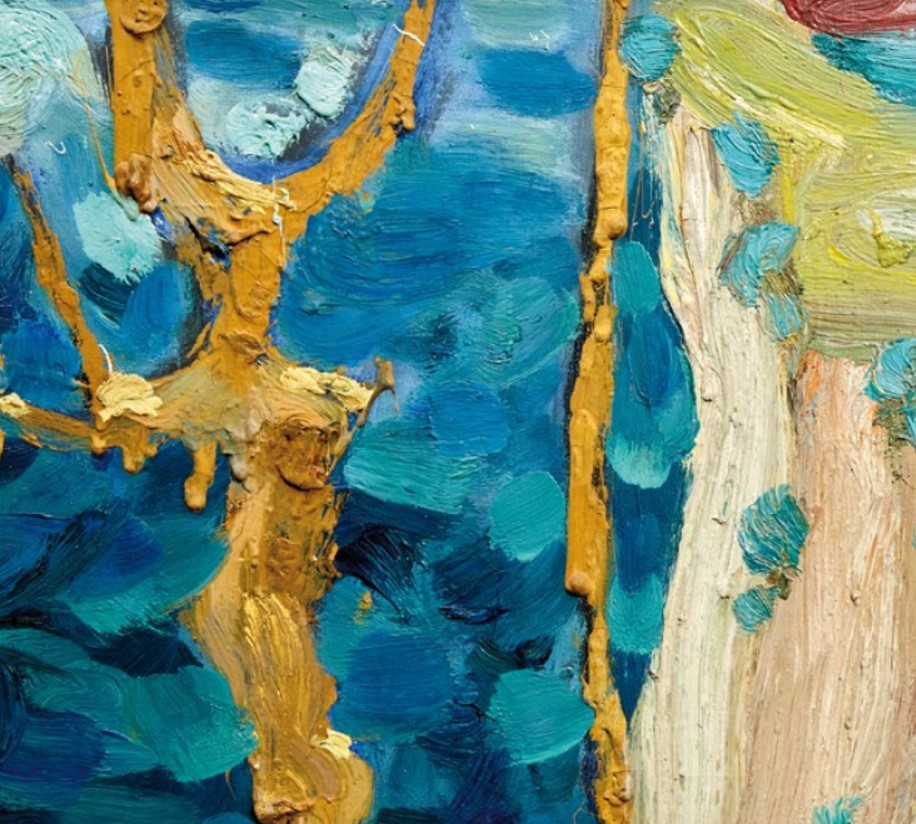Art
Global Art Market Cooled In 2019

The global art market's total value of turnover slipped last year. The sector can be a barometer for how well the overall economy - and wealth management sector - fares. The UBS/Art Basel report noted that online sales have not fully caught fire, while art fairs have become more important transaction hubs.
The world’s art market cooled slightly in 2019, with some economic uncertainties and previous years’ bumper figures making it hard to push even higher. However, the market remains robust, and sales volume continued to be strong, according to the annual Art Basel study of the global market, issued in partnership with UBS.
The state of the art market can be a barometer of wealth management industry health more broadly: rising numbers of ultra-high net worth and HNW individuals, and rising spending power in regions such as Asia and North America, have propelled growth over the past decade.
Global art and antiques sales reached an estimated $64.1 billion in 2019, falling by 5 per cent from a year ago, and taking the market to just above the level reached in 2017. The three largest hubs for art – the US, UK and China – accounted for 82 per cent of all art transactions, slipping by 2 per cent from the level in 2018. The US remains number one – accounting for 44 per cent of global sales by value, but sales dropped by 5 per cent year-on-year to $28.3 billion, the report said.
Perhaps, inevitably, uncertainties last year about the Brexit process (and possible changes to UK taxation of art sales may also have figured as an issue) hit the British market, falling by 9 per cent to $12.7 billion. The UK makes up 20 per cent of the global market by value.
In China, sales dropped by 10 per cent to reach $11.7 billion, the second year in a row that sales have fallen; China makes up 18 per cent of the market total, the report said.

The 193-page report, produced by Dr Clare McAndrew, founder of Art Economics, is the fourth such report to have been issued in conjunction with UBS.
France was the one major markets to defy the decline trend, with sales rising by 7 per cent in value to $4.2 billion, taking its global share to 7 per cent from 6 per cent, the report said.
“The art market often mirrors the economic developments and trends we see in wealth creation. Global economic growth was below normal in 2019. Geopolitical and trade issues created uncertainty for companies. Consumers stayed firm, however, and equity markets were strong. The 2010s were the best decade for global stocks since the 1980s,” Paul Donovan, chief economist, Global Wealth Management UBS, said in the report.
Segments
Sales in the gallery and dealer sector reached $36.8 billion last year, rising by 2 per cent. The magnitude of changes varied widely: dealers with a turnover between $500,000 and $1.0 million suffered a 9 per cent turnover drop; those with sales from $250,000 to $500,000 rose by 17 per cent, however, showing a split in the market. This split also reflects how dealers view the future: lower-end dealers are more upbeat than those at the higher bracket.
Dealers said finding new buyers is the biggest challenge and the share of sales to new clients rose by 5 per cent in 2019 to 34 per cent.
Sales at public auction of fine and decorative art and antiques (excluding auction house private sales) fell quite sharply, down by 17 per cent to $24.2 billion. Private sales rose, however, including sales of more than $1.8 billion at Christie’s and Sotheby’s, the report said.
Post-war and contemporary art was the largest segment of the auction market last year, taking a 53 per cent share of value, and reaching $6.1 billion, down by 10 per cent.
Art fair sales reached an estimated $16.6 billion; dealers said that 15 per cent of these sales were made before the fair, 64 per cent during the fair and 21 per cent once the fair was over. Dealers’ annual sales by value made at art fairs reached 45 per cent in 2019, up from 30 per cent in 2010.
In a finding that might surprise given the hype about e-commerce, online art and antique sales were estimated at 9 per cent of sales in the market by value, at $5.9 billion, and falling by 9 per cent from the level in 2018. For those dealers who sold online last year, 57 per cent did so to new buyers. Some 77 per cent of online trades linked buyers and sellers more than 1,000 kilometers apart. HNW Millennial collectors were the most regulator online participants.
Millennials and women
Surveys of more than 1,399 high net worth collectors in seven
markets showed that Millennials and women spend the most, and
spent the most on art and collectibles, averaging a total
expenditure of $3 million over two years. Some 34 per cent of
women had spent more than $1.0 million in the last two years,
against 25 per cent of men.
HNW collectors owned an average of 76 works; more than 30 per cent of these works are kept in storage where they cannot be viewed.
A busy sector
The report estimates that there were 310,810 art and antique
businesses, employing about 3 million people, a figure holding
steady versus 2018. In the gallery and dealer sector, about 2.7
million people were employed. The auction sector employed 285,100
people. The sector also creates work for related fields: the art
trade spent $19.9 billion on external and ancillary
support.